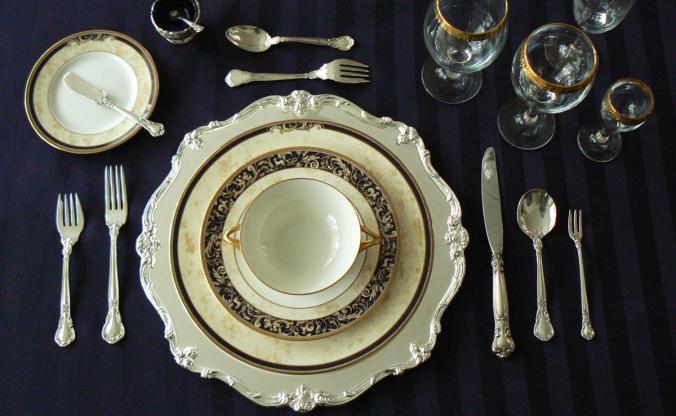
This week I took a trip to the University of Maryland to give a talk about parasites. I waxed poetic about how sophisticated parasites are in their manipulations of their hosts, and how we might do well to learn from their wisdom about how the brain works. At dinner, I sat next to David Inouye, the incoming president of the Ecological Society of America. The waiter set down plates in front of us, loaded with plants, animals and fungi–free-living organisms, in other words. As we looked at the plates, a question came up: is there a parasite you can eat?
Obviously, no one sits down to a piping hot bowl of smallpox soup. But parasites can also take the form of plants, animals and fungi–just like the plants, animals, and fungi we were eating.
Having written a book (and many articles) on parasites, I couldn’t think of a parasite that people eat. But if there’s one thing I’ve learned about parasites, it’s never to make an assumption about them, because the truth will always be weirder than I imagined.
Inouye, on the other hand, immediately thought of one: pea crabs.
Pea crabs get their names from their tiny size. They slip into the shells of mussels and oysters, where they take up residence on the gills of their hosts. They feed on the bits of food in the water that their hosts pump into the shell. Pea crabs are bad for their hosts, gradually eroding their gills that they depend on to take in oxygen. But despite their cruel way of life, they’re tasty. George Washington, Inouye informed me, was the most famous fan of pea crabs, delighting to eat them in oyster stew.
In Mexico, another parasite is a popular delicacy. Called huitlacoche, this parasitic fungus infects corn. As it feeds on an ear of corn, it balloons out into a gruesome grey bulb. But served up in a quesadilla, it’s reportedly delicious.
Later in the week, Inouye decided to present our question to an email list of ecologists. It turned out there were a lot more parasitic dishes.
Take lampreys. Lampreys belong to an ancient lineage of vertebrates, branching off on their own before the evolution of jaws. Instead, these creatures have a disk-shaped mouth ringed with rasp-like teeth. Many species of lampreys are parasites. They use their suckers to grab onto other fish. Riding along, they dig into the flesh of their host, and feed on its blood and flesh.
Despite being rather loathsome parasites, lampreys are a delicacy. Henry I, the king of England, reportedly died from eating too many lampreys. Queen Elizabeth was served a lamprey pie on her coronation day. (The Internet being the Internet, there is a whole page dedicated to the 1000-year history of the lamprey pie.)
I could imagine eating a lamprey pie (if it was diced into very small pieces), but some forms of parasite cuisine are beyond my comfort zone. The zoologist Tim Flannery describes watching someone in New Guinea gut a marsupial, remove any tapeworms from its intestines, and put the still-squirming parasites in his mouth. In 1955, a biologist doing field work in Alaska reportedthat Inuits liked to eat the warble fly maggots that develop in the hide of the reindeer.
And in his 2003 presidential address to the American Society of Parasitologists, Robin Overstreet discussed another delicacy of the Inuits:
These people, however, obtain an even larger parasite snack by eating Pennella balaenopterae, a poorly understood [crustacean] species that can grow to monstrous proportions. Specimens up to 30 cm long routinely embed deeply into the blubber of baleen whales, with the posterior of their bodies trailing free from the host. The plump and juicy body extremity is plucked from the host and eaten raw, and the “sweet” contents of the blood-filled neck are sucked out.
Overstreet’s whole speech was about ingesting parasites. Apparently, you cannot impeach a president for such an act. If you’re so inclined, you can read the speech here. It’s fascinating, but the quality of the photographs that accompany it is far too good for my peace of mind.
Finally, people eat parasites as medicine. Dodder is a parasite, growing on other plants and drawing out their nutrients. In the Philippines, people take dodder as a traditional treatments for aches and other ailments. Another fungus, called Cordyceps, turns ants into zombies. To keep the insides of their ant homes clean of germs, they make antibiotics. The popularity of the fungus in Chinese medicine has led to a Cordyceps boom in Tibet, the subject of this fascinating National Geographic storythis fascinating National Geographicstorythis fascinating National Geographic story.
The list of parasites as food turns out to be encyclopedic. And so, when your local artisanal hipster eatery runs out of ideas, don’t be surprised if they reopen under a new name: Cafe Liver Fluke.
[Update: Thanks for all the comments. I have to pull this one up into the post itself:
How in the world did you miss the French dish Bécasse ? This gastronomic delicacy consists of an oven roasted woodcock (Scolopax rusticola) whose intestines are infested with the tiny tapeworm Amoebotaenia lumbrici. After the bird is roasted whole with the innards intact, the intestines are removed and chopped up into a pâté. The unique flavor of the pâté has always been attributed to the roasted tapeworms. After reading your first paragraph, Bécasse pâté was the first thing that I thought of.]